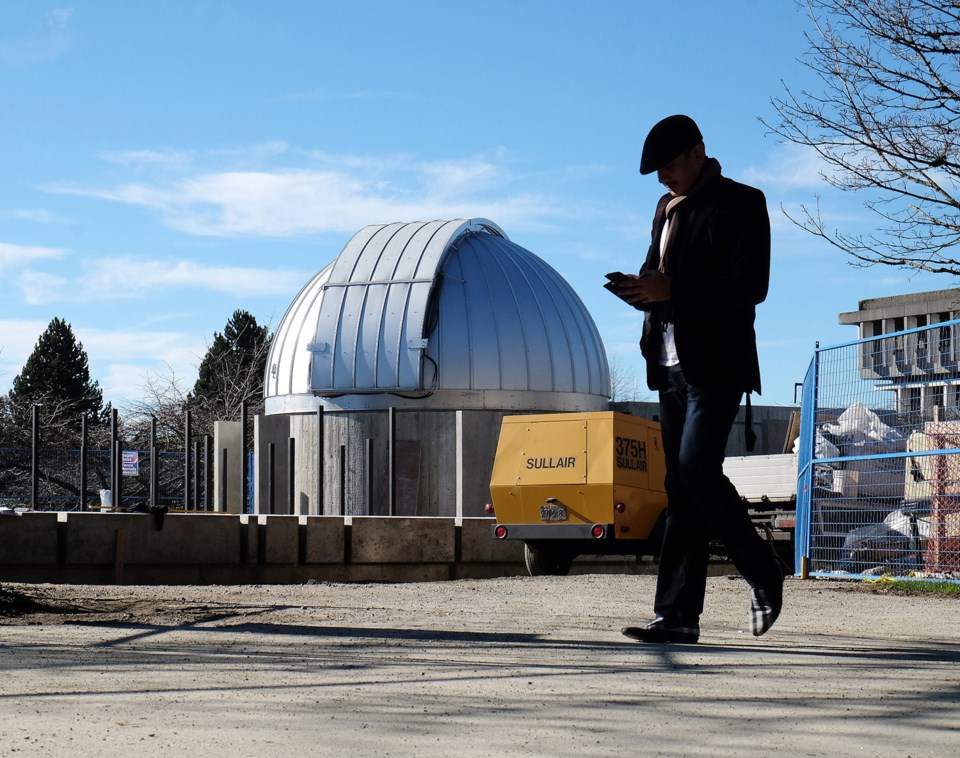The completion date of the Trottier Observatory at SFU's Burnaby campus has been pushed back a couple of weeks.
Howard Trottier, who's spearheading the project, told the NOW crews are still working on landscaping the area.
"I was just there this morning and it looks pretty good. It should be all done by the middle of March with our grand opening on April 17," the physics professor said.
The $4.4-million investment, made possible through the Trottier Foundation (headed by Trottier's brother and sister-in-law), features a dome six metres in diameter which houses a 0.7-metre diametre reflector telescope that can track billion-year-old galaxies. The star-gazing equipment will also provide a digital feed that can be remotely accessed and deployed by community groups and schools across Canada.
The space, located at the east end of campus near Strand Hall, is about 90 per cent landscaped.
"Since the weather is bad, most of the time people will be on site when we're not using the observatory, so because of that, we put in a lot of elements that represent astronomy in different ways," Trottier said. "It'll be an interesting place to hang out during the day and at night."
Those elements include a viewing plaza with sundials and a space for people to set up their own telescopes.
"This site is really meant for public education. We haven't had many 'star parties' lately, but we typically have between 200 and 300 people show up. I expect we'll see more once the observatory is up and running," he added.
In partnership with the Trottier Studio for Innovative Science Education, the space will offer hands-on science activities and outreach programs to the roughly 5,000 children, youth and visitors the campus attracts annually.



